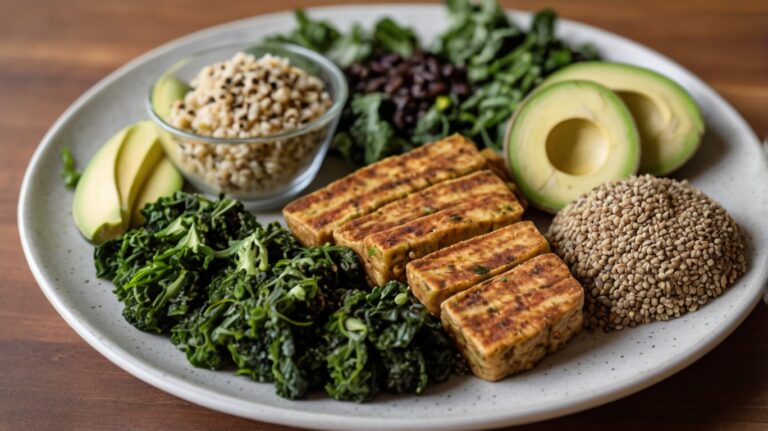How to Calculate Your Calorie Needs for Weight Loss
Ever felt like you’re spinning your wheels trying to lose weight? You’re not alone. Millions of people struggle with the same challenge every day. But what if I told you that understanding your calorie needs could be the game-changer you’ve been looking for?

Imagine having a personalized roadmap to weight loss, tailored just for you. No more guesswork, no more fad diets. Just a clear, science-backed approach to reaching your goals.
In this guide, we’ll demystify calorie calculations and show you exactly how to determine your unique calorie needs for weight loss. Whether you’re just starting or looking to fine-tune your approach, we’ve got you covered.
TL;DR: Learn how to calculate your personal calorie needs for effective weight loss. We’ll cover BMR, TDEE, creating a calorie deficit, and practical tips for success. No fluff, just actionable advice to kickstart your weight loss journey.
1. What Are Calories?
First, to Calculate your calories you need to understand what is calories. Calories are units of energy in food. They fuel our bodies. When we eat more calories than we need, we gain weight.
When we eat fewer calories than we need, we lose weight. To lose weight, you must eat fewer calories than your body uses. This is called a “calorie deficit.”
2. Things That Affect How Many Calories You Need
Several things change how many calories your body needs:
- Age: Older people usually need fewer calories
- Gender: Men often need more calories than women
- Height and weight: Bigger bodies need more calories
- How active you are: More active people burn more calories
- How much muscle you have: Muscle burns more calories than fat
- Your genes: Some people naturally burn more or fewer calories
- Health issues and medicines: These can change how many calories you burn
3. Finding Your Basic Calorie Needs
Even when you’re resting your body burns calories. This is called your BMR (Basal Metabolic Rate). There are formulas to estimate your BMR. These use your age, gender, height, and weight. The Mifflin-St Jeor formula is a good one to use:
- For men: BMR = (10 × weight in kg) + (6.25 × height in cm) – (5 × age in years) + 5
- For women: BMR = (10 × weight in kg) + (6.25 × height in cm) – (5 × age in years) – 161
4. Figuring Out Your Total Daily Calories
Your Total Daily Energy Expenditure (TDEE) is all the calories you burn daily. This includes your BMR plus calories from moving and exercising.
To find your TDEE:
- Calculate your BMR
- Multiply it by how active you are: • Not active: BMR × 1.2 • A little active: BMR × 1.375 • Moderately active: BMR × 1.55 • Very active: BMR × 1.725 • Extra active: BMR × 1.9
Creating a Calorie Deficit for Weight Loss
Aim to shed 1-2 pounds each seven days to lose healthily. Descending 1 pound a week entails consuming 500 fewer calories than your daily fuel requirements. To drop 2 pounds a week, eat 1000 fewer calories than your body burns daily.
For example, should your daily calorie needs be 2200: To drop 1 pound/week: Ingest 1700 calories every day To decrease 2 pounds/week: Eat 1200 calories daily Take care to avoid eating too small.
Females shouldn’t eat under 1200 calories in a day. Males shouldn’t eat fewer than 1500 calories daily.
As your weight reduces, you will need to recalculate your caloric requirements. This is because smaller frames necessitate fewer calories to operate. Recall, that the most beneficial diet is one you can attach with for the long haul.
The Hidden Role of Plant Toxins in Your Weight Loss Journey
Speaking of calculating your calorie needs for weight loss, have you ever thought about how plant toxins might be messing with your progress?
I know, it sounds wild—aren’t plants supposed to be good for us? But hear me out. Some plants have natural compounds like lectins, oxalates, and phytates that can throw a wrench in your plans.
These little troublemakers can cause inflammation, mess up your digestion, or zap your energy—all things that make losing weight way harder than it needs to be.
Take lectins, for example—they’re in stuff like beans, grains, and tomatoes. They can irritate your gut, leaving you bloated or uncomfortable. Then there’s oxalates, found in spinach and nuts, which might lead to achy joints or even kidney stones if they build up.
And phytates, hiding in seeds and whole grains, can block your body from soaking up nutrients like iron or zinc, leaving you feeling wiped out.
I used to struggle with this myself—constant bloating and low energy, even when I was eating “healthy” and counting every calorie. It was maddening!
Then I gave the carnivore diet a shot. By ditching plants and sticking to meat, eggs, and fish, I cut out those toxins completely. The difference? Night and day.
My gut settled down, my energy came roaring back, and the scale finally started moving in the right direction. It’s like my body could focus on dropping fat instead of fighting off plant compounds.
Conclusion
While calorie counting is a powerful tool, it’s not the only factor in weight loss. The quality of your food choices, regular physical activity, adequate sleep, and stress management all play important roles.
Be patient with yourself and focus on creating lasting habits rather than seeking quick fixes. With the right approach and mindset, you can achieve your weight loss goals and improve your overall health.





